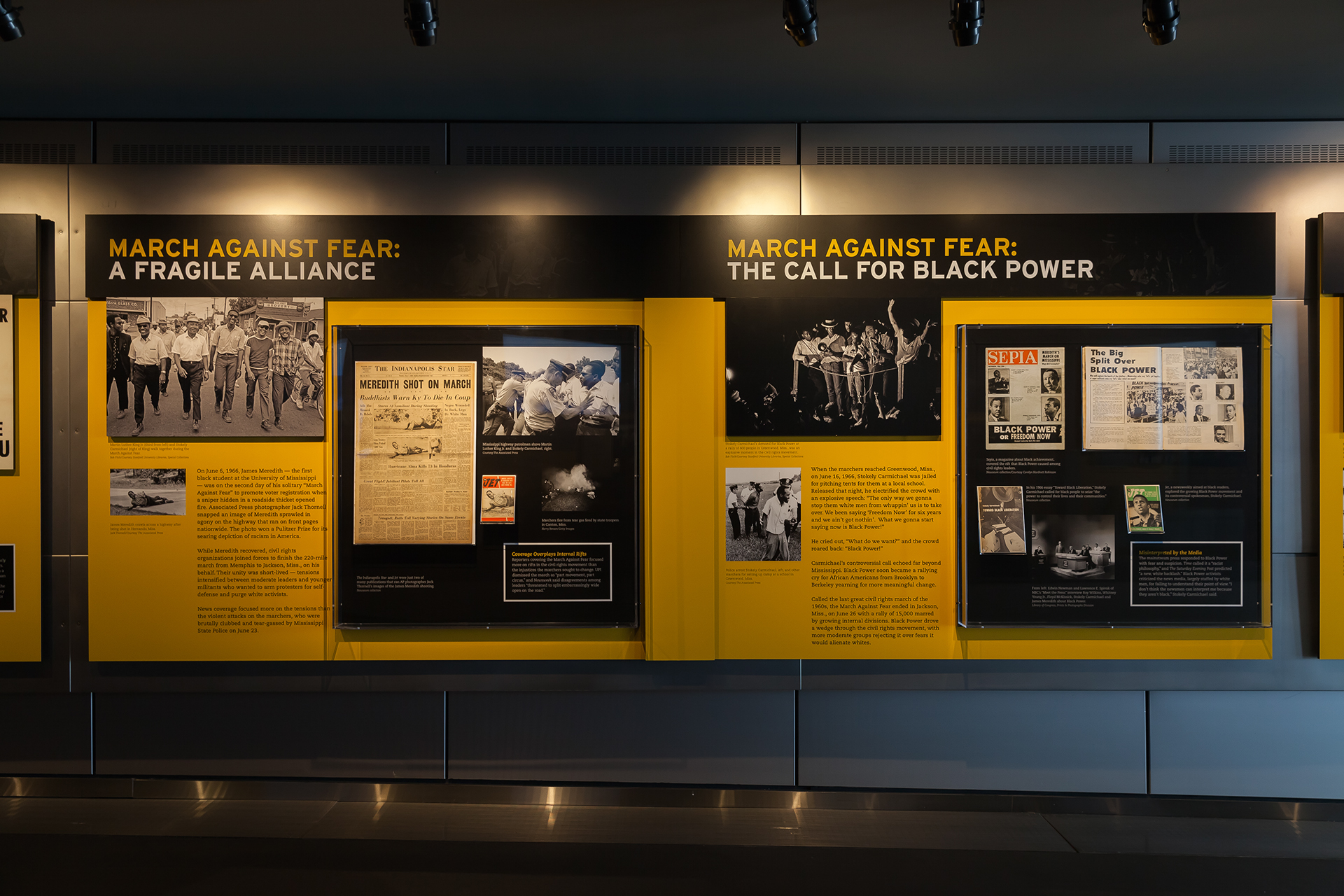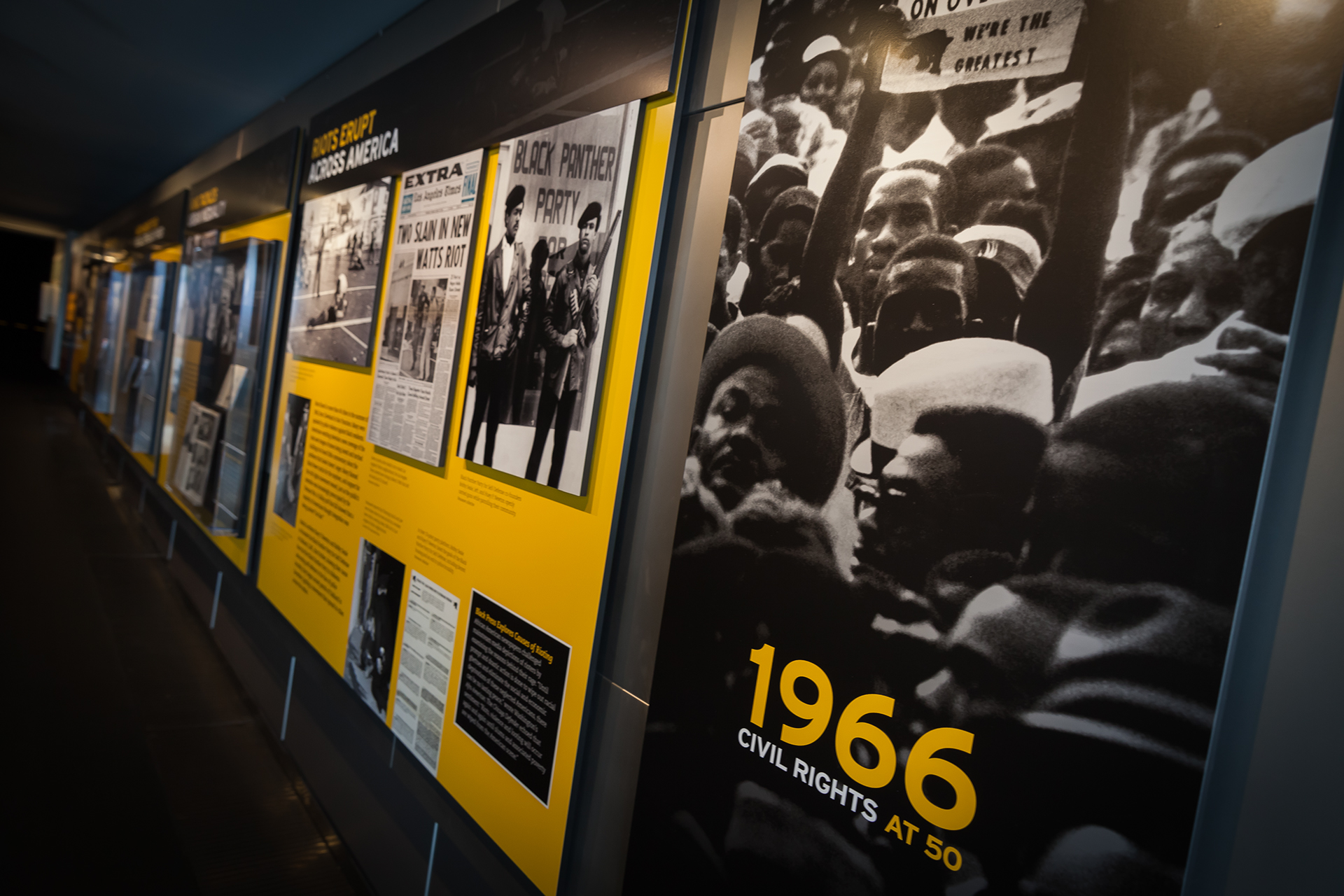














Civil Rights at 50 is a changing exhibition exploring the relationship between the news media and the civil rights movement between 1963 and 1966.
1963: Civil Rights at 50
1963 was a turning point for the civil rights movement.
Peaceful protests, demonstrations and boycotts provoked violent responses that rocked the country as activists intensified their push for the basic civil rights that were still denied to African Americans a century after the Emancipation Proclamation.
“1963: Civil Rights at 50” is part of a three-year changing exhibit exploring the relationship between the news media and the civil rights movement between 1963 and 1965.
Responsibilities include: concept design, exhibit design, exhibit graphic design, mount making drawings, fabrication drawings and promotional graphic design.

Civil Rights at 50 is a changing exhibition exploring the relationship between the news media and the civil rights movement between 1963 and 1966.
1964: Civil Rights at 50, Freedom Summer
It was called Freedom Summer, a campaign organized by civil rights groups to send hundreds of young people into the racist heart of Mississippi to register black voters.
Students from the North poured into the state to campaign for change, helping thousands of black citizens apply to vote and organizing Freedom Schools that educated more than 3,000 children.
But segregationists fought to crush them. Volunteers were arrested and beaten. Black churches and homes were bombed and burned. Three young civil rights workers who disappeared on the first day of Freedom Summer were found 44 days later, brutally murdered by members of the Ku Klux Klan.
The summer of activism sped passage of the landmark Civil Rights Act and galvanized support for the Voting Rights Act of 1965, which guaranteed a vote for every American.
Photojournalist Ted Polumbaum was on the front lines of Freedom Summer, covering the campaign for Time magazine. His photographs featured here are part of the Newseum’s permanent collection.

Civil Rights at 50 is a changing exhibition exploring the relationship between the news media and the civil rights movement between 1963 and 1966.
1966: Civil Rights at 50,
Civil rights leader Stokely Carmichael’s impassioned demand for “black power” at a 1966 march in Mississippi unleashed a new era of militancy in the struggle for racial justice.
By the mid-1960s, organized sit-ins, mass protests and voter registration campaigns in the South had captured the world’s attention and inspired landmark civil rights legislation. But millions of black people still faced poverty, poor housing and high unemployment. Police violence was a constant threat.
Building on the legacy of black nationalist leader Malcolm X, Carmichael preached a message of empowerment and racial pride. His fiery speeches galvanized people who were angry about crippling inequality and police brutality. His call for armed resistance became a rallying cry for many African Americans, but it was a shocking break from the nonviolent tactics of Martin Luther King Jr. and drove a wedge through the civil rights movement.
Racism in the urban North seized headlines that summer as riots flared in dozens of cities, fueling a backlash against the new Black Power movement. But the dramatic events of 1966 shattered the notion that racism was solely a Southern problem, forcing people nationwide to reckon with the depths of American inequality.
